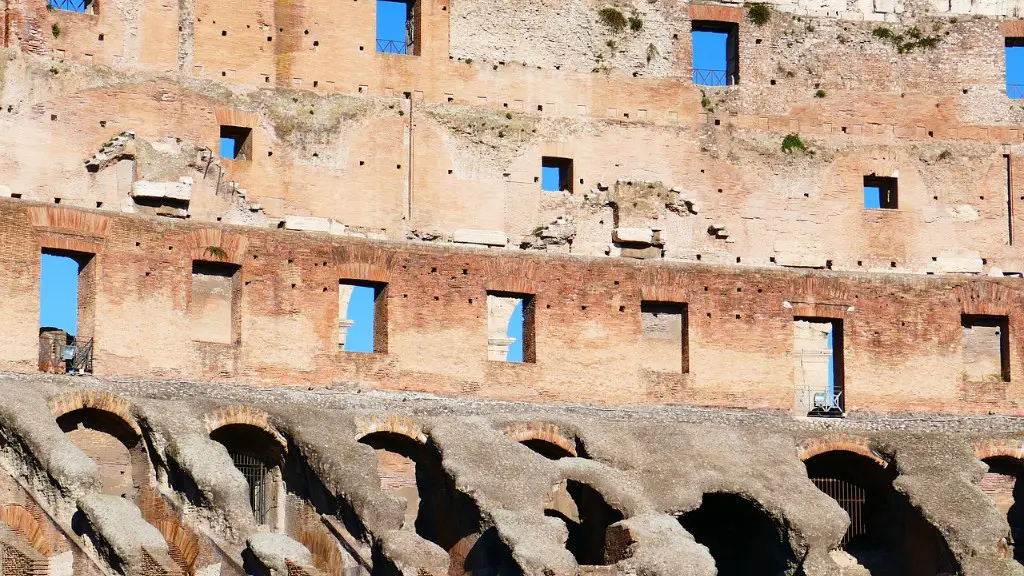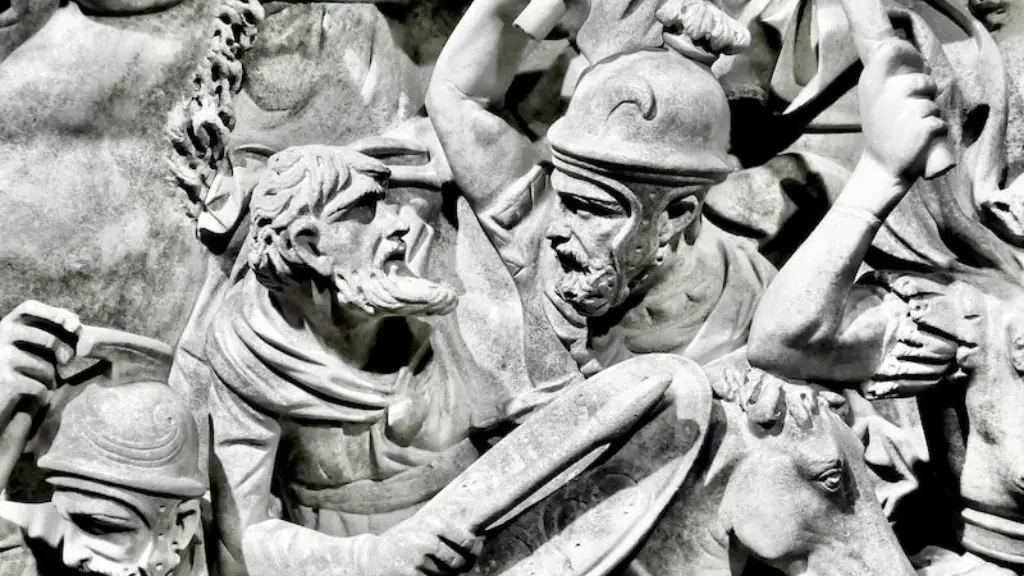Ancient Roman Medicine
Ancient Roman medicine was highly advanced for its time and was heavily influenced by the earlier Greeks. The development of Roman medicine was largely based on empirical evidence, trial-and-error, and an understanding of basic anatomy and physiology. Roman physicians and medical practitioners during this period were the first to use systematically collected clinical data and are credited with advancing surgical techniques and general knowledge of human anatomy and medicine.
Roman medicine was generally based on the Hippocratic Four humours theory, which was a popular method of treating illness in the eastern Mediterranean for two millennia. This theory was based on the idea that the human body is made up of four fundamental elements – blood, phlegm, yellow bile, and black bile. These were thought to be in balance when a person is healthy, and illness was thought to occur when these balances shifted.
In terms of surgery, Roman physicians made significant advances in the field. During the 1st century, they began to employ cauterization and cautery equipment to close off wounds and stop bleeding. Some even developed collections of surgical instruments that included knives, tweezers, and scalpels. In addition, they also employed techniques such as ligature, which was the tying off of veins and arteries before sticking a hot poker close to the wound to seal it and create a scab. Many Roman physicians also worked on developing methods of cleansing wounds with alcohol and vinegar to prevent infections.
Roman physicians had access to the early writings of Hippocrates and other Greek physicians and were encouraged to experiment with new ideas and treatments. They conducted autopsies to determine diagnoses and to better understand human anatomy. They also made use of various herbs and drugs, although it is not known how effective most of them were, as the modern understanding of pharmacology was still centuries away.
Roman physicians were some of the first to categorize illnesses based on symptoms and signs, although their classification system was much more primitive than what we use today. They were also well-versed in the various classical Greek arts of healing. In fact, many Roman physicians learned their craft from Greek pupils and shared their knowledge with others, leading to many new discoveries in the field of medicine.
Epidemic diseases such as smallpox and influenza did occur in Roman times, although they were not as widespread as during the Middle Ages. Contagious disease was often treated with herbal remedies or purgation, which was the removal of toxic substances or poisons from the body. There were also attempts to combat contagious diseases with isolation or quarantine, but these were not always effective.
Overall, Roman physicians were highly advanced for their time and their contributions to the medical field have had a lasting impact. They were responsible for some of the earliest documented autopsies, surgical techniques, and pharmacology-related information. Their knowledge of anatomy and understanding of the importance of evidence-based medicine laid a foundation for future generations to build upon.
Roman Attitudes About Mental Illness
In regards to treating mental illness, Roman attitudes varied over time. Generally speaking, mental illness was seen as a sign of demonic possession and was generally viewed with fear and suspicion. During the Roman Republic, people with mental illness were often subjected to harsh punishment, such as exile or death. Towards the end of the Republic and the beginning of the Empire period, attitudes about mental illness began to change. Mental illness was seen more as a sign of internal distress, rather than a sign of a supernatural power affecting a person.
Roman physicians sought out treatments for mental illness such as physical exercise, baths, blood-letting, music, and even prayer. Greek philosophy was influential on Roman views of mental health, and many Romans believed that mental illness could be treated through discussion and contemplation. Romans were also familiar with cure-all remedies such as mandrake root, a plant that was thought to have magical properties. Unfortunately, most of these treatments were ineffective and could even be dangerous.
During the Empire period, some Roman physicians sought to treat mental illness with drugs, although these efforts largely failed. Physicians such as Galen, who lived in the 2nd century, sought to use drugs to restore normalcy to a person’s humors. Galen had some success with this method, though it wasn’t until the 19th century that psychiatrists began to use drugs to treat mental illness effectively.
Generally speaking, Roman attitudes towards mental illness tended to be negative. People with mental illness were often banished from society and their suffering was largely ignored. Still, some Roman physicians and philosophers sought to understand mental illness and attempted to treat it through various means. These efforts laid the groundwork for modern psychiatry and psychological treatments.
Roman Influence on Modern Medicine
The work of Ancient Roman scholars and physicians are still very influential in modern medicine. Their reliance on empirical evidence and experimentation set a precedent that has been followed by Western medicine for centuries. They also pioneered many of the techniques used in modern surgery and pharmacology. Roman physicians also had a large influence on the theories of Hippocrates and other Greek medical thinkers.
Their interest in anatomy, pathology, and surgery had a profound influence on later medical practitioners. Most notably, the Roman physician Galen had a major influence on the Islamic world, where his work was adopted and further advanced by physicians in the region. Galen’s work on anatomy, physiology, and pharmacology was so influential that much of it remained in use until the Renaissance.
Although Roman medicine had its faults, it was nevertheless highly advanced for its time. Methods of treatment such as cauterization, cautery equipment, ligature, and purgation were all technological advances made during the Roman period. Roman scholars also took an interest in disease prevention, as evidenced by their attempts to combat the spread of infectious illnesses such as smallpox.
Rome’s contributions to the medical field are still significant today. Modern medicine is greatly indebted to the knowledge and practices developed by ancient Roman scholars and physicians. The Romans were the first to systemically collect clinical data and develop sophisticated techniques for the practice of medicine that remain in place today.
Roman Medical Instruments
Roman medical instruments have endured the passage of time and are still in use in some form or another today. Roman physicians experimented with a variety of instruments, ranging from small needles used to close wounds with thread, to scalpels and cautery rods used to perform surgery. These instruments were often made of bronze and copper, and were intricately crafted based on the needs of the practitioner.
Roman physicians also had access to a variety of herbal remedies. These included plants like chamomile and thyme, which were used to treat certain ailments such as headaches, digestive issues, and skin disorders. Other herbs, such as mandrake root, were used to treat mental illness, though these treatments were largely ineffective.
In addition to herbal treatments and instruments, Roman physicians also had access to more advanced techniques and medicine. Opium, for example, was used to manage pain, and mercury was used to treat various skin conditions and venereal diseases. Roman physicians also made use of vaccines, though these were not very effective at the time.
The sophistication and lasting effects of Roman medical instruments and treatments attest to the highly advanced and forward-thinking nature of Roman medical practitioners. The legacy of ancient Roman medical instruments is still present in modern medicine today, as many of these instruments are still used in hospitals and doctor’s offices around the world.
Roman Embalming Techniques
Embalming, or the preservation and mummification of bodies after death, was practiced in Ancient Rome for hundreds of years. It was often used to honor important individuals, such as soldiers and statesmen, who were to be interred in tombs. Roman embalming techniques were based on the earlier Egyptian practices and generally involved the removal of internal organs and the filling of the body cavity with wax or spices.
The Clazomenians, an ancient Anatolian people, are thought to have introduced embalming to the Ancient Romans. The oldest known burial that includes evidence of embalming dates to 377 B.C., during the reign of Constantinius I. Roman embalming relied on a series of chemical solutions such as natron, concentrated sodium hydroxide, or alum. These solutions were used to purge the body of bodily fluids, which served to preserve the corpse.
Once the body had been cleansed, it was filled with aromatic spices and herbs such as cedar, frankincense, and myrrh. This helped to further preserve the body and also gave off a pleasant smell. In some cases, garments were also placed on the body to give it a lifelike appearance.Many of these techniques are still employed in embalming today.
Apart from honoring fallen heroes, Roman embalming was also used for more mundane purposes. It was sometimes used to prevent the spread of contagious disease, and many commoners were also embalmed and kept in tombs or ossuaries. This practice was largely abandoned during the Middle Ages and was not revived until the 19th century.
The practice of embalming in Ancient Rome was heavily influenced by the earlier Egyptian culture. The Romans adopted the practice and developed their own methods of preservation, which included the use of chemical solutions, aromatic spices, and garments. Embalming had many practical applications, such as honoring fallen warriors, preventing the spread of disease, and even preserving dead loved ones.





